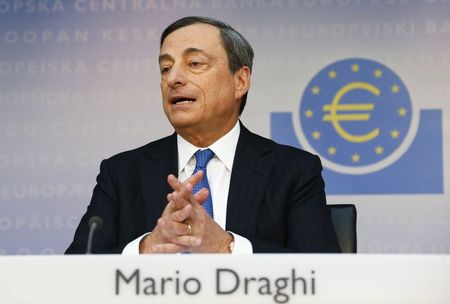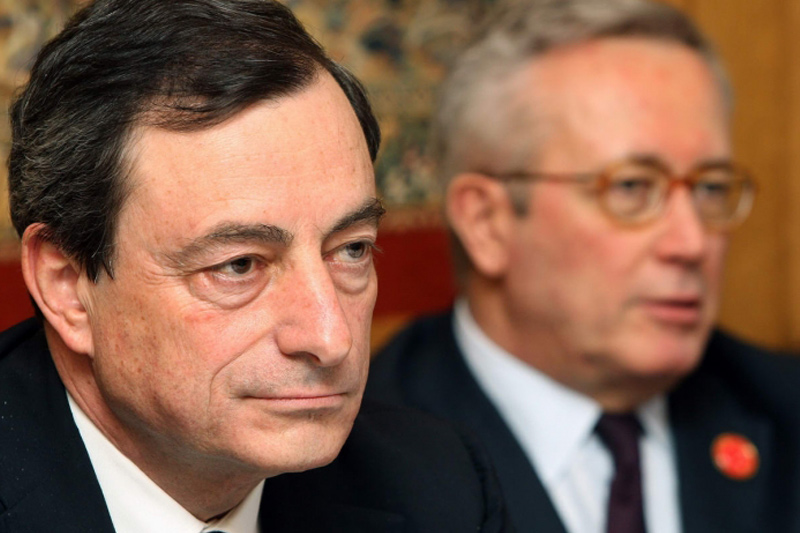By Paul Carrel
FRANKFURT (Reuters) - European Central Bank President Mario Draghi faces a grilling after Thursday's policy meeting over forward guidance on interest rates after he hinted at a stronger message last week without being specific.
To breathe life into a sluggish euro zone, the ECB cut interest rates to record lows at its June 5 meeting, launched a series of measures to pump money into the economy and pledged to do more if needed to fight off the risk of Japan-like deflation.
The steps to pump out money included extending the duration of unlimited cheap liquidity for banks until the end of 2016, and offering them a four-year loan plan - or TLTRO - to borrow at a slight premium to regular ECB funding operations.
Draghi said these two steps meant "interest rates will stay low for long, possibly longer than previously foreseen".
His message presented banks with a conundrum: if the guidance is underpinned by the TLTROs, that suggests rates could remain on hold until 2018 - in which case there is no incentive for banks to pay extra for the four-year funds.
Banks will be charged a 10 basis point premium over the ECB's main funding operations for the four-year TLTROs, targeted measures aimed at increasing their lending to businesses.
The four-year loans would act as a hedge against early policy tightening, however. Only last year, the Bank of England was talking about rates staying at record lows into 2016. Now, the consensus is that a first upward move could come this year.
Britain's economic recovery is well in advance of the euro zone's - and there is no threat of deflation in the UK - but any view of where interest rates rely four years hence is freighted with uncertainty.
"The reason most banks will take up the TLTRO and pay that 10 basis point fee is rate hike insurance," said RBS economist Richard Barwell.
"If you think they can raise rates in 2017 and 2018, get your fixed-rate funding now and pay that fee. But if he (Draghi) convinces you there are no rate hikes, why would you take up the TLTRO?" he asked. "I think it's fuzzy because they don't agree."
Governing Council member Ewald Nowotny suggested last month a rate hike could come before the TLTROs mature.
"Interest rates will turn as soon as there is clear growth, so more than 2 percent, but from today's perspective that will hardly be before 2016," Nowotny said in a newspaper interview.
Economists polled by Reuters were unanimous in expecting no further change in rates at Thursday's ECB meeting after which Draghi will hold a news conference.
Euro zone inflation remains far below the ECB's target of just under 2 percent. Price data for June, released on Monday, showed annual inflation in the bloc stayed at 0.5 percent last month.
Should inflation weaken further, pressure will grow on the ECB to turn to quantitative easing (QE) - essentially creating money to buy government or private debt from banks to keep borrowing costs low and boost spending.
Draghi whetted markets' appetite for such action when, after announcing the ECB's package of policy message last month, he told his news conference "we aren't finished here".

The Italian has since said large-scale asset purchases are part of the ECB's toolkit, but that for now the bank would focus on its latest set of stimulus measures which will take until late this year to assess for impact.
While Nowotny in mid-June described talk of QE as "phantom discussions", a Reuters poll of economists pointed to a one-in-three chance of the ECB launching an asset purchase program within 12 months.
(Editing by Mike Peacock)
